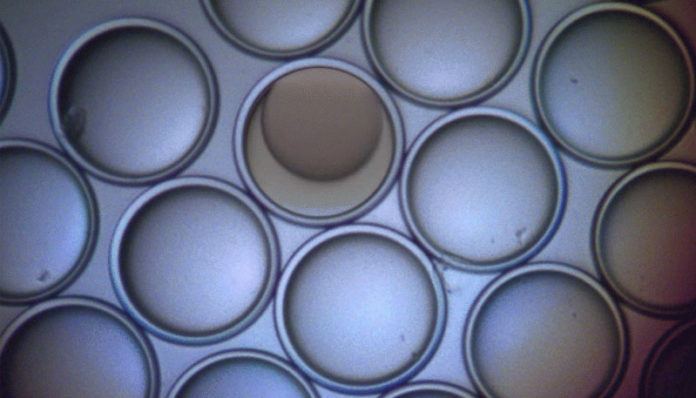Liquid droplets are real magnifier that act as lens. Microscopes on this principle were state of the art in the 17th century. Once again, MIT researchers have created micro-lenses from it. This droplet microscope which made from complex tiny droplets have the size of width of a human hair.
Each droplets in this droplet microscope involves an emulsion, or combination of two liquids. When both are mixed together, it creates bead of oil within the drop. The droplet switches from one conformation that focuses light, to another that scatters light. Hence, even under the normal condition, this magnifier can easily capture images of surrounding objects.
Previous droplet like microscope was very difficult to use. But now the researchers have reconfigure the properties of each droplet. By doing this, they have altered their way and then scattered light. It is necessary to adjust the focus of this droplet microscope.
Assistant professor Mathias Kolle said, “We have shown fluids are very versatile optically. We can create complex geometries that form lenses that tuned optically. When you have a tunable micro-lens, you can dream up all sorts of applications.”
Scientists have shaped the curvature of interface between the internal bead and surrounding droplet. To do so, they combined the chemistry and light. This interface acts as a kind of internal lens.
According to scientists, “This tunable micro-lenses might be used as liquid pixels in a three-dimensional display. It directs light to precisely determine angles and projecting images that change depending on the angle from which they are observed.”
Kolle said, “We hope that we can use the imaging capacity of lenses on the microscale combined with the dynamically adjustable optical characteristics of complex fluid-based microlenses to do imaging in a way people have not done yet.”
To manipulate the droplets’ optical properties, the researchers added certain concentrations and ratios of various surfactants. In this case, one of the surfactants as a light-sensitive molecule when exposed to ultraviolet light changes the shape. This modifies the tension at the droplet-water interfaces and the droplet’s focusing power. This effect can be reversed by exposure to blue light.
The researchers also describe their idea for how the microlenses might be used as pocket-sized microscopes.
Kolle said, “The whole system could be the size of your phone or wallet. If you put some electronics around it, you have a microscope where you can flow blood cells or other cells through and visualize them in 3-D.”
